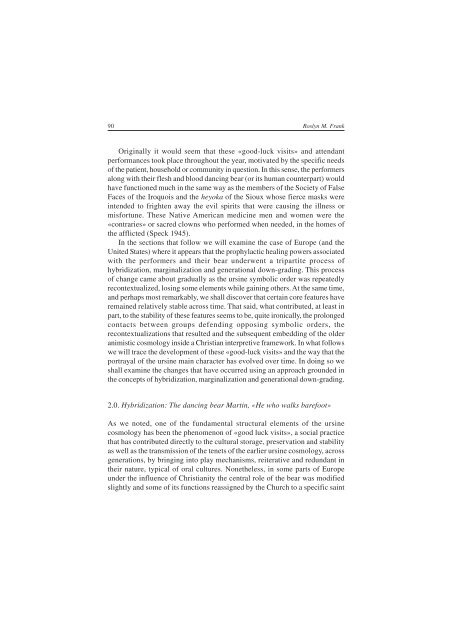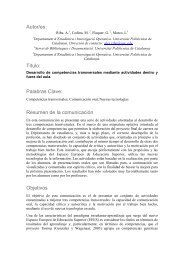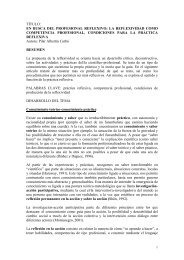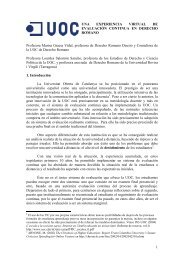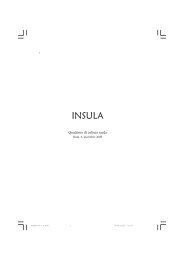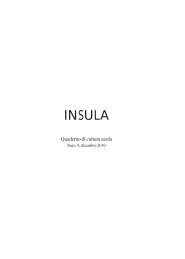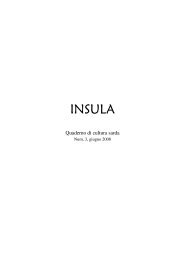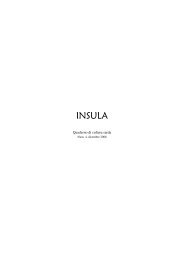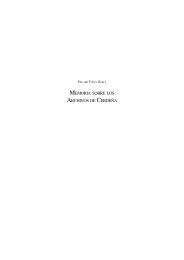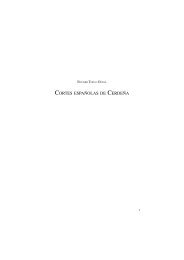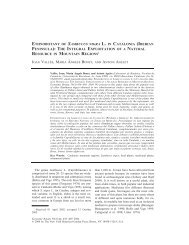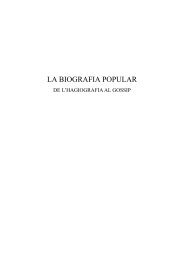Impaginato 5.p65 - Universitat Rovira i Virgili
Impaginato 5.p65 - Universitat Rovira i Virgili
Impaginato 5.p65 - Universitat Rovira i Virgili
You also want an ePaper? Increase the reach of your titles
YUMPU automatically turns print PDFs into web optimized ePapers that Google loves.
90<br />
Roslyn M. Frank<br />
Originally it would seem that these «good-luck visits» and attendant<br />
performances took place throughout the year, motivated by the specific needs<br />
of the patient, household or community in question. In this sense, the performers<br />
along with their flesh and blood dancing bear (or its human counterpart) would<br />
have functioned much in the same way as the members of the Society of False<br />
Faces of the Iroquois and the heyoka of the Sioux whose fierce masks were<br />
intended to frighten away the evil spirits that were causing the illness or<br />
misfortune. These Native American medicine men and women were the<br />
«contraries» or sacred clowns who performed when needed, in the homes of<br />
the afflicted (Speck 1945).<br />
In the sections that follow we will examine the case of Europe (and the<br />
United States) where it appears that the prophylactic healing powers associated<br />
with the performers and their bear underwent a tripartite process of<br />
hybridization, marginalization and generational down-grading. This process<br />
of change came about gradually as the ursine symbolic order was repeatedly<br />
recontextualized, losing some elements while gaining others. At the same time,<br />
and perhaps most remarkably, we shall discover that certain core features have<br />
remained relatively stable across time. That said, what contributed, at least in<br />
part, to the stability of these features seems to be, quite ironically, the prolonged<br />
contacts between groups defending opposing symbolic orders, the<br />
recontextualizations that resulted and the subsequent embedding of the older<br />
animistic cosmology inside a Christian interpretive framework. In what follows<br />
we will trace the development of these «good-luck visits» and the way that the<br />
portrayal of the ursine main character has evolved over time. In doing so we<br />
shall examine the changes that have occurred using an approach grounded in<br />
the concepts of hybridization, marginalization and generational down-grading.<br />
2.0. Hybridization: The dancing bear Martin, «He who walks barefoot»<br />
As we noted, one of the fundamental structural elements of the ursine<br />
cosmology has been the phenomenon of «good luck visits», a social practice<br />
that has contributed directly to the cultural storage, preservation and stability<br />
as well as the transmission of the tenets of the earlier ursine cosmology, across<br />
generations, by bringing into play mechanisms, reiterative and redundant in<br />
their nature, typical of oral cultures. Nonetheless, in some parts of Europe<br />
under the influence of Christianity the central role of the bear was modified<br />
slightly and some of its functions reassigned by the Church to a specific saint


